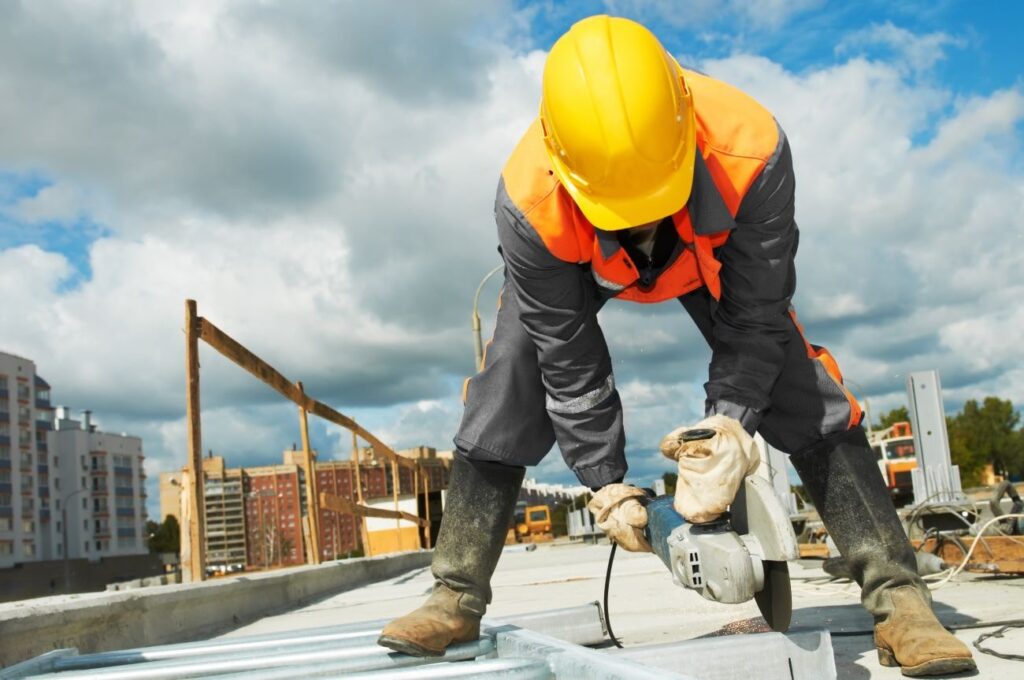The Complete Guide to Lone Working in the UK
Ensuring the health and safety of lone workers isn't just a legal obligation - it's a critical component of responsible business management. If you are someone overseeing lone workers across your business, you're likely already aware of your obligation to safeguard your employees and comply with health and safety regulations.
However, navigating the complexities of lone working and health and safety legislation involves more than just adherence to rules.
To help you fully understand your role and responsibilities towards lone workers, we've put together this guide to provide you with a comprehensive overview of all aspects of lone working.
From defining what constitutes lone working and identifying unique risks to exploring regulations and innovative solutions, we've got it covered. We'll guide you through effective assessment procedures, policy implementations, and the latest in lone worker technology.
Additionally, you'll find practical tools and templates to help you implement the strategies discussed.
What is Lone Working?
The Health and Safety Executive (HSE) defines lone workers as "those who work by themselves without close or direct supervision". It's estimated that 8 million people across the UK can be defined as a lone worker, which is about 1 in every 4 people of the 33 million UK working population.

The term ‘lone worker' does not mean they're not part of a team, nor does it mean they are necessarily working in isolation.
Rather, a lone worker is anyone whose job scope includes duties that will have them working without a co-worker or team member present, whether they are in a private, enclosed, or public workplace.
Lone workers can also be working in teams within the same vicinity or building, but they are located far enough away from their teammates and/or manager that they are out of sight and out of hearing range, whether that's at a fixed location, on the road, or somewhere else.
Recent years and months have also seen a steady rise in the number of people previously based in office environments working from home instead. Remote working is also legally recognised as a form of lone working.
It's an employer's responsibility to manage the safety risks of their lone workers. This includes regular check-ins, managing work stress, and ensuring they have the right tools and equipment. It's all about keeping them safe and connected, wherever they are.
Rules and Regulations for Lone Working
There are certain jobs that, by law, can't be done alone. The HSE lists these as:
Work in a confined space
Work close to exposed live electricity conductors
Diving operations
Driving vehicles carrying explosives
Fumigation
Lone working situations other than these will have different types and levels of risk that employers need to identify, assess, and then manage by:
Training, supervising and monitoring lone workers.
Mitigating risks in the workplace.
Quickly and efficiently responding to incidents.
Following these steps would be in compliance with the following laws:
Health and Safety at Work etc. Act 1974
This legislation was established as a measure against the hazardous environments prevalent in factories and mines at the time. Its primary objective is to enhance the overall health, safety, and welfare of all employees, including lone workers, across the UK.
Under this act, employers have a legal duty to identify health and safety risks, put reasonably practicable measures in place to ensure safe working conditions and equip employees with adequate information and training to fulfil their responsibilities whilst ensuring their own safety.
Management of Health and Safety at Work Regulations 1999
This regulation was introduced to reinforce the Health and Safety at Work etc. Act. The regulation specifically imposes duties on employers to assess and manage risks to their employees, including lone workers, as well as to others affected by work activities.
It also outlines the health and safety responsibilities of employees, ensuring a comprehensive approach to workplace safety.
87% of companies prosecuted in 2018 for a health and safety breach had been charged for failing to assess risk adequately.
Health and Safety (Offences) Act 2008
This act was introduced to update the procedures for trial and the maximum penalties for various offences concerning health and safety. It makes it an offence for employers to fail to establish and maintain adequate health, safety, and welfare systems for their employees and to subsequently fail to implement those safety measures effectively.
Any breaches of this law can lead to unlimited fines and up to 2 years imprisonment.
Understanding the Risks in Lone Working
Lone workers face different health and safety risks based on their job role. They might work alone in one or more of these situations:
Working With the Public
Examples of lone workers: Security guards, police officers, retail workers, caregivers, food delivery workers and real estate agents.
Unfortunately, lone workers are more at risk of physical violence, threat and robbery than those operating close to their colleagues. According to statistics from the British Crime Survey released in 2018, as many as 150 lone workers are attacked daily in the UK, either physically or verbally.
This is primarily because they are more likely to work in remote areas, either early in the morning or late at night, and can be in charge of enforcing rules for the public.
These risks can be reduced with adequate lone worker training and preparation, helping workers to identify potential dangers and learn de-escalation techniques. These tactics can help those in public-facing roles to protect themselves and others while on the job.
High-Risk Work
Examples of lone workers: Engineers, cleaners, laboratory technicians, offshore workers, miners, cable technicians, construction workers, plumbers and electricians.

Environmental hazards for lone workers are a common issue. Four of the top five causes of workplace accidents involve factors related to an employee's workspace. Examples of common workplace injury causes include:
Slips, trips and falls on the same level
Handling, lifting or carrying
Being struck by a moving object
Falls from height
Biological hazards
Chemical hazards
Natural disaster hazards
Bad or extreme weather
Ergonomic hazards
Employers need to ensure that safety protocols are in place to mitigate these risks if they can’t be eliminated altogether, such as regular equipment checks and safe working practices. For example, falls from height can be prevented by the following working from height regulations.
Training workers to recognise and avoid hazards is also essential.
Working on the Road
Examples of lone workers: Bus drivers, food delivery drivers, emergency services workers, real estate workers and mobile salespeople.

In addition to following the rules of road traffic legislation, employers responsible for lone workers on the roads must ensure that health and safety regulations are also observed.
It's important for employers to monitor work schedules, focusing on preventing driver fatigue and maintaining general health. Additionally, ensuring that vehicles are well-maintained is crucial. Employers should also keep open lines of communication for any emergencies that may arise on the road, such as road accidents or vehicle breakdowns.
Working from Home
Examples of lone workers: Office workers working remotely, gig economy workers and consultants.

Employees working from home, whether full-time, part-time, as gig workers, or volunteers, have the same rights as those working on-site. Employers are equally obligated to safeguard their health and safety.
With more people working remotely, the risks have shifted more towards mental health issues. Isolation and lack of direct support can lead to increased stress. Employers must ensure that remote workers maintain regular contact with their team, access to support, and a healthy work-life balance. Physical health shouldn't be overlooked either; providing ergonomic advice and equipment can help prevent strains or injuries.
In each of these situations, it's vital for employers to assess the specific health and safety risks involved with the job and take appropriate measures to mitigate them. By understanding the different types of risks and implementing targeted strategies, employers can create a safer working environment for all their lone workers.
How to Perform a Lone Worker Risk Assessment
Conducting a lone worker risk assessment is one of the most important things that those responsible for employee safety should do. Not only does it help businesses identify potential hazards associated with their industry and workspace, but it also makes creating a lone worker policy much easier and more efficient.
Performing a risk assessment isn't just a sensible thing to do - it's also required by law in the UK, especially if you have five or more employees. Neglecting this responsibility could expose your company to substantial fines or even more severe penalties.
Every job role has its own risks, which can either be very general or extremely specific to your industry. For example, a retail worker probably won't need to worry about working at height, but a roofer isn't likely to be interacting with the public much. By understanding the risks that are particular to your industry, you can better protect your lone workers.
To complete a useful dynamic risk assessment, it is best to follow a system that ensures you've identified all potential risks so you can follow up with training, monitoring systems, risk mitigation steps, and emergency response procedures to protect lone workers while they are on duty.
5 Steps to Assessing Risks
Performing a lone working risk assessment consists of the following steps:
Identify: Find out what the hazards are.
Assess: Understand how these hazards could harm someone.
Control: Plan how you'll reduce or remove these risks.
Record: Write down your findings and what you plan to do.
Review: Keep checking and updating your controls.
Getting risk assessment right is crucial. Mistakes aren't just about potential fines, which can soar up to £120,000 for violations of HSE regulations, but more importantly, they're about people's safety.
To avoid these costly errors, using a structured lone worker risk assessment template is a wise move to help you cover all your bases to mitigate risks and keep your lone workers safe. It is an easy way for you to determine where your business needs to improve, create new policies, or fine-tune existing regulations relating to health and safety.

Remember, conducting regular risk assessments isn't optional; it's a legal must-do. It's central to preventing accidents and safeguarding the wellbeing of your lone workers. In the next section, we'll walk you through how to implement these safety measures effectively.
Writing an Effective Lone Worker Policy
After assessing the risks, it's time to build your lone worker policy. This policy is your blueprint for safety and lone working legal compliance. It should reflect everything learned during the risk assessment and establish clear rules and procedures.
The policy becomes a one-stop resource for lone workers and those responsible for adherence to the policy. Having a policy in place fulfils the employer's responsibility to communicate rules and regulations around health and safety to their workforce. If you employ five or more people, then this policy must be in writing.
Creating this policy can be a solo task or a team effort. The key is to involve those who know the ins and outs of your work environment.
Before you finalise the policy, consult your employees. Their insights can make your policy more effective. Once it's done, it's up to them to follow the rules designed to keep them safe, but it's also crucial for managers to provide the right training that helps employees properly adhere to the lone worker policy.
Check out our free guide, “Writing a Lone Worker Policy: Your Step by Step Guide”, for industry best practices and guidance on what to include in your lone worker policy document.

Implementing Comprehensive Lone Worker Solutions
In summary, lone workers require more careful attention than general workers when it comes to health and safety procedures.
Despite this, there is a tendency for lone worker protection to be seen as either an afterthought or an unnecessary expense in the health and safety world. This is likely due to how the intricacies and additional steps of focusing on lone worker safety can feel like a difficult burden upon managers and employers.
However, with the right approach, keeping lone workers safe isn't as complicated as it might seem. With the right templates and guidelines, assessing lone working risks and writing policies becomes straightforward. It's all about having the right tools to work with.
Enhancing Lone Worker Safety with Technology
Monitoring and creating top-notch working procedures doesn't need to be complicated either, thanks to the lone worker safety devices and mobile apps now available for lone working.
Lone worker alarms, for example, allow users to access help whenever needed, with features such as an SOS button and Man Down sensor that detects when they have fallen.

These personal safety devices can often just be clipped on a belt or worn on a lanyard and provide immediate assistance when needed by connecting the wearer with contacts from their own company or, alternatively, highly-trained operators who can alert emergency responders if necessary.
To find out how our lone worker safety solutions can benefit your organisation, you can get in touch with us via our contact form.
Remember, protecting lone workers is a crucial part of business responsibility, but it doesn't have to be a burden. With the right tools and procedures in place, health and safety professionals can meet the safety and compliance needs of their lone workers and organisation respectively without feeling overwhelmed by the intricacies of lone worker protection.
Creating a Culture of Safety: Engaging Lone Workers
In any organisation, the safety of workers, particularly lone workers who may not have the immediate support of colleagues, is crucial. While it's vital to have structured policies and procedures, the culture of safety within the company plays a critical role. Engaging employees in building a powerful safety culture isn't just beneficial; it's transformative.
Here's how organisations can specifically engage lone workers in fostering an employee-led safety culture:
1. Empowerment through Ownership
Encourage lone workers to take ownership of their safety. Provide them with the necessary training, resources, and autonomy to identify and address safety concerns. Regular safety training sessions help reinforce safe practices and inform workers about changes in legislation or procedure.
An employee-led approach means workers are not just following rules but actively participating in creating a safer workplace.
2. Two-Way Communication
Regular, open communication is vital. Employees should be updated about safety policies, changes in procedures, and any new risks identified.
But communication should also be a two-way street; workers need a platform to report hazards, provide feedback, and share ideas for improving safety. This approach ensures they are not isolated despite physical solitude and can contribute valuable insights based on their unique experiences.
Using technology like mobile apps can facilitate this continuous dialogue, ensuring lone workers feel heard and valued.
3. Involvement in Decision Making
Involve employees in safety decision-making processes, including risk assessments and the development of safety procedures. Their direct involvement ensures that the measures in place are an accurate reflection of the risks they face and the realities of their work environment.
4. Building a Community of Safety
Foster a sense of community among all workers, including those who work alone. Use technology to connect lone workers with their peers and management, creating a support network that promotes safety and reduces the feeling of isolation.
5. Recognising and Rewarding Safety Initiatives
People respond positively to recognition and rewards. Implementing a system that acknowledges and rewards safe behaviour motivates workers to take ownership of their safety and encourages ongoing participation. This could be through formal awards, acknowledgements in meetings, competitions, or even small incentives for reporting hazards or near-misses.
By tailoring safety strategies to engage lone workers actively, organisations not only comply with legal requirements but also build a more committed, aware, and safer workforce. Cultivating an employee-led safety culture ensures that safety is a shared value and responsibility, deeply embedded in the organisation's operations and ethos.

Check out our "Ultimate Guide to Lone Working Safety" for a more comprehensive look at keeping your staff safe. Discover extensive coverage on the risks associated with lone working, how to minimise them, legal requirements, employer responsibilities, and much more, all designed to help you ensure a safer working environment.